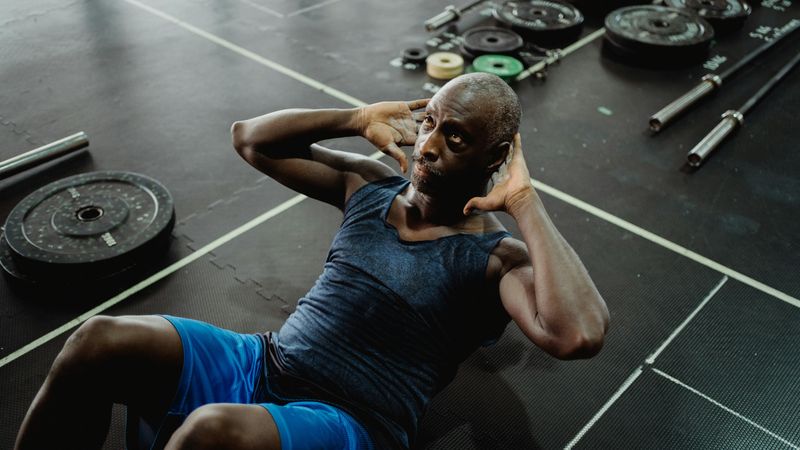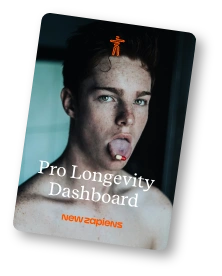Fasting, Cold, Bloodwork: What Helps Men Can Cast Hormonal Shadows in Women

High testosterone, intermittent fasting, cold plunges, biohacking scores – all of these are trending. But what happens when we apply these strategies to a body they were never designed for?
The truth is uncomfortable: Most longevity hacks are based on male data. And that’s a problem – especially for women, whose hormonal systems are finely tuned and cyclical.
What boosts energy, focus, and libido in men can lead to cycle irregularities, PMS, or even full-on burnout in women.
Female longevity needs a different strategy. A hormonally intelligent one.
The Data Gap: A Longevity World Designed by and for Men
80% of medical research is conducted on men or male cell lines.
This doesn’t just affect drugs or diagnostic procedures – it also applies to biohacks, supplements, fasting protocols, and cold therapy.
Women are often excluded from studies because their hormonal cycles are seen as a “disruptive factor.”
The result?
A system that defines the male body as the norm – and ignores the female body altogether.
What Women Actually Need: 5 Hormonally Intelligent Shifts
1. Fasting Protocols: Well-Intentioned – Hormonally Risky
Fasting is a central tool in longevity science – but there’s a major catch:
Women respond very differently to caloric restriction than men. Many women adopt intermittent fasting routines that work well in labs – on male subjects.
But research shows:
- Women react differently to fasting. Extended fasting (>14h) can suppress ovulation, lower progesterone, and worsen PMS.
- During the luteal phase, energy demands increase – fasting adds an extra layer of stress.
What helps instead: personalize fasting
- Cycle-based fasting: In the follicular phase (start of cycle to ovulation), moderate fasting windows (e.g., 12:12 or max. 14:10) are often well tolerated.
- In the luteal phase (post-ovulation), fasting should be reduced or avoided – energy needs are higher and the body is more stress-sensitive. Instead, prioritize three balanced meals with stabilizing fats and proteins.
2. Cold: A Stimulus for Him – A Stressor for Her
Cold plunges activate mitochondria? True – but not for everyone in the same way.
Women show:
- stronger vasoconstriction
- higher cortisol release
- and less thermal adaptation to cold exposure
What helps instead: keep it short and cycle-aware
- Use cold exposure intentionally and briefly (e.g., cold showers for 30–60 seconds max).
- Cold is better tolerated in the follicular phase (higher stress resilience). In the luteal phase or during high stress: best to skip it.
3. Bloodwork? Only Meaningful If Interpreted Through a Female Lens
Lab reference values are almost always calibrated to male baselines.
For women, this means:
- A ferritin level of 30 ng/ml is considered “normal” – yet menstruating women may need higher levels for optimal iron status.
- Thyroid markers vary with the menstrual cycle – something standard tests rarely account for
What helps:
- Time your bloodwork by cycle phase (ideally day 3–5 or day 21).
- Look for optimal values, not just “normal” ones – and work with labs experienced in women’s health.
4. Micronutrients = Hormonal Infrastructure
Magnesium, vitamin B6, omega-3s, and certain adaptogens influence:
- PMS
- Estrogen detoxification
- Progesterone production
- and mental stress regulation
But as always: dosage and timing matter.
What helps:
Adapt to the cycle. Magnesium for sleep regulation, omega-3 as a foundation.
5. Your Cycle: Not a Disruption, But a Navigation System
Energy, mood, recovery, libido, sleep quality – all are influenced by your cycle.
Yet most people ignore this when it comes to training, nutrition, work, or supplementation.
What helps:
Track 2–3 cycles. Note energy, sleep, appetite, and mood. You’ll start to see patterns – and discover ways to support your body, not overburden it.
By understanding your cycle, you can take control of your health and move toward hormonal balance – in a way that works for you.
Conclusion: Female Hormonal Balance Isn’t a Side Issue – It’s the Core of Longevity
Longevity for women requires more than discipline – it demands data, nuance, and female intelligence.
In daily life, research, and product development: it’s time to stop ignoring the female body and start seeing it as the rhythm-setter for a healthier future.
That’s what fembites stands for. And that’s what I show up for every day.
References
Author: Angelica Conraths
Angelica Conraths is the founder of the femtech startup fembites and Global Chair of the Gender Data Gap at G100. Her mission: to place the female body at the center of research, innovation, and healthcare — scientifically grounded, hormonally intelligent, and rooted in everyday life.




